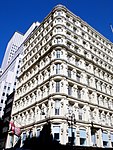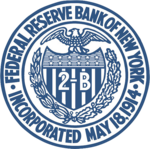John Street Theatre
1767 establishments in New York1798 disestablishments in New York (state)18th century in New York CityAC with 0 elementsBuildings and structures demolished in 1798 ... and 5 more
Commercial buildings completed in 1767Demolished buildings and structures in ManhattanDemolished theatres in New York CityFormer theatres in ManhattanTheatre in the United States

John Street Theatre, situated at 15–21 John Street, sometimes called "The Birthplace of American Theatre", was the first permanent theatre in the Financial District of Manhattan, New York. It opened on December 7, 1767, and was operated for several decades by the American Company. It closed on January 13, 1798.
Excerpt from the Wikipedia article John Street Theatre (License: CC BY-SA 3.0, Authors, Images).John Street Theatre
John Street, New York Manhattan
Geographical coordinates (GPS) Address Nearby Places Show on map
Geographical coordinates (GPS)
| Latitude | Longitude |
|---|---|
| N 40.70977 ° | E -74.008838 ° |
Address
John Street 20
10038 New York, Manhattan
New York, United States
Open on Google Maps










